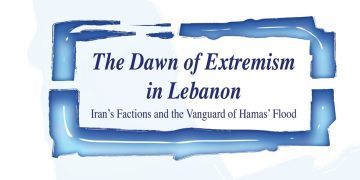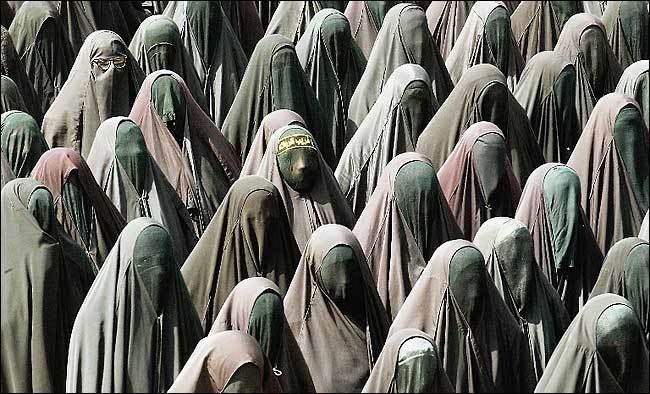By Dr. Rita Faraj
The notion of “the gem woman” – based on the adage, “Aren’t pearls found only in oysters?” — is the basis of the discourse established by Muslim Brotherhood founder Hasan Al-Banna (1906-1949) on women. In his writings, he lays out roles for women, specifying the conditions that limit their movement in the community within frameworks that do not exceed the traditional context but often fall short of it. He regarded the essential role of women as in the home, as wives and mothers.
Al-Banna wrote, “Revealing the face and hands of a woman is forbidden unless she feels sure to avoid temptation, then she may do so.” He also wrote, “When it was enacted that a woman may not mix with man, may not travel with him a distance that allows shortening prayers unless she is accompanied by an unmarriageable person and she should perform her natural function of organizing the family kingdom, Islam did not mean to stain her honor or deny her freedom, but rather meant to maintain and protect her.” Such is Banna’s notion of “the gem woman.” He forbade women from mixing with men, celebrating, adorning themselves, disobeying their husbands, and entering the workplace. He demanded the confiscation of newspapers, magazines, novels, other writings, and denial of radio and theater: “It is necessary to confiscate such supply of detrimental newspapers, magazines, theaters, and exciting playful radio stations, which exploit people’s lowest feelings and instincts; resist this trend of using cosmetics, mixing with men, going out of homes and private quarters in order to wander about in parks, summer resorts, recreational ground and beaches and prohibit these despicable means that facilitate the purposes of young people.” (See: Al Banna, Hasan: Min ahdaf Al Da’wa [Some purposes of preaching], Muslim Brotherhood Magazine, 20 May 1944, No. 11, p. 3-4.)
In his book The Muslim Woman, Al Banna attacked mixing between men and women: “Islam sees mixing between men and women as a real danger, and separates one from the other except by marriage.” He described the Muslim community as a “solitary community, not a communal one.” He called for allowing “women to witness festivals, attend assemblies, and go out to fight when necessary.” But he set the limit there and stipulated many conditions, such as avoiding all forms of adornment, covering the body with clothes that do not highlight the features, and never to be alone with an unrelated man under any circumstances. He wrote that all of this was intended to guard men from the temptation of women. (See Al Banna, Hasan, Al Mar’a Al Muslima [Muslim Woman], Dar Al Kutub Al Salafiya, 2nd ed., 1407. See also Al Sayyid, Yousuf, Al Mar’a wa Huququha fi Manzour Al Ikhwan Al Muslimin [Woman and Her Rights from a Muslim Brotherhood Perspective], 1st ed., 1998, pp 60-61). Banna restricted women’s work to homes, but made an exception: “If there are social necessities for a woman to engage in work other than her natural task, it is her duty to abide by the conditions set by Islam to guard men from the temptation of women and women from the temptation of men. She should work as much as necessary, not as a general system under which every woman has the right to work (Al Banna. Muslim Woman, Op. Cit). The responsibility of women according to Banna is “her husband and children. As for the advocates of Westernization, who call for the right to vote and to practice law, we respond to them that if men, who are mentally superior to women, did not do well in performing this right, how would women who are decreased in mind and religion!”
Following in the footsteps of Banna, many theorists of political and Salafi Islam went so far as to consider the spread of unemployment in Egypt to be due to the competition of women and men in the field of work. In 1988, Yusuf Al-Badri (1938 – 2014) called for a ban on appointing women to government positions to eliminate unemployment. Religious scholar Muhammad Saeed Ramadan Al-Bouti (1929-2013) said that “the great guarantee to keep things on the right track is that women should refrain from entering the field of work except in the narrowest circumstances and in case of need.” He denied them the rights to vote and practice law. There voices also agreed that women should not assume important positions, including, of course, the Grand Imamate (Al Misri, Sana’: Khalf al Hijab: Mawqif al Jama’at al Islamiyya min Quadiyyat al Mar’a (Behind the Veil: The Position of Islamic Groups Regarding the Cause of Women), Al Shu’aa for Publishing. Cairo, 2nd ed., 2004, pp. 61-76).
The literature of the Muslim Brotherhood on women has changed slightly. It no longer demands the isolation of women from public life, and calls instead for bringing women into public affairs. Yusuf Al-Qaradawi has called for the development of women’s leadership within the Islamic Movement: “Islamic work WILL not succeed and prove its itself unless it produces Islamic women leaders in the fields of preaching, thought, science, literature and education.” (Al Qaradawi, Yusuf: Awlawiyyat al Harakati al Islamiyya fi al Marhala al Qadima (Priorities of the Islamic Movement in the Coming Phase), Wahba Library, Cairo, 1st ed., 1992, p. 64).
In 1994, the Muslim Brotherhood issued a document entitled “Muslim Women in the Muslim Community,” allowing for the political participation of women, except to serve as head of state. In practice, however, women are barely represented in the Brotherhood’s consultative councils and play only a minimal role in the movement’s decision-making delinberations. Some attribute the absence of women in the organization to “the social and cultural origins of the members of the Islamic movement themselves, most of whom come from the poor and middle classes, where the role of women is still limited, secondary and often subordinate.” (See Bayyoumi, Layla: Hal Ansafat Al Sahwa al Islamiyya al Mar’a am Zalmatha (Was the Islamic Awakening Just or Unjust to woman), Nawafeth website, 9 April 2006).
Prior to 2000, women were not represented in Egypt’s parliamentary elections in which the Muslim Brotherhood participated. In the 2005 elections, the only female candidate, Makarem Al-Diri, ran along with Issam Mukhtarfor the Heliopolis and Nasr City constituencies, respectively. It is worth mentioning that the Muslim Brotherhood achieved some electoral success at the time, attributed according to many analysts to the absence of a strong alternative to the ruling National Democratic Party aside from the Brotherhood, which adopted the controversial slogan,”Islam Is the Solution.” The results spoke to the impact of this slogan’s snetiment: The Brotherhood attracted a significant number of non-members of the Muslim Brotherhood. For the first time, girls wearing veils, jeans, and cotton clothes were seen in marches organized by Muslim Brotherhood candidates.
Female members of the Muslim Brotherhood were long influenced by its most rigid, traditional teachings. They did not press for a substantial enhancement of the role of women, even within the Muslim Sisters’ wing. Nor, for decades, did they break the glass ceiling on meaningful participation in the Muslim Brotherhood’s Shoura (consultative) Council. They made only minimal headway in advancing educational levels of the movement’s women. Yet they emerged as prominent drivers of the Brotherhood’s role in the June 30, 2013 revolution.
As noted earlier, there have nonetheless been slight changes in women’s roles more recently — apparently an adjustment in light of the more rapid progress of women’s rights in Egyptian society writ large. But the advances remain more cosmetic than structural.














